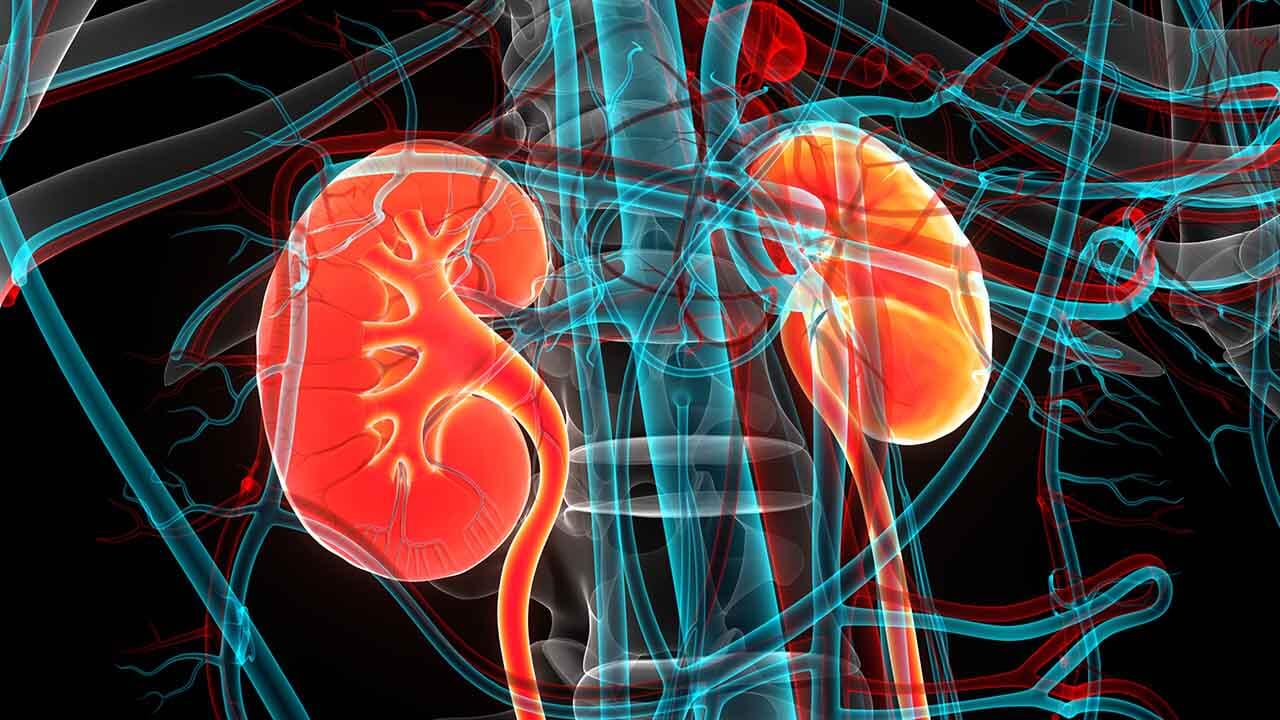

Your kidneys are two bean-shaped organs, each about the size of a fist. They are located just below the rib cage, one on each side of your spine.
Healthy kidneys filter about a half cup of blood every minute, removing waste and extra water to make urine. The urine flows from the kidneys to the bladder through two thin tubes of muscle called ureters, one on each side of your bladder. Your kidneys, ureters and bladder are part of your urinary tract.
Your kidneys remove waste and extra fluid from your body. Your kidneys also remove acid that is produced by the cells of your body and maintain a healthy balance of water, salts and minerals—such as sodium, calcium, phosphorus and potassium—in your blood.
Your kidneys also make hormones that help:
Healthy kidneys filter about a half cup of blood every minute, removing waste and extra water to make urine. The urine flows from the kidneys to the bladder through two thin tubes of muscle called ureters, one on each side of your bladder. Your kidneys, ureters and bladder are part of your urinary tract.
Your kidneys remove waste and extra fluid from your body. Your kidneys also remove acid that is produced by the cells of your body and maintain a healthy balance of water, salts and minerals—such as sodium, calcium, phosphorus and potassium—in your blood.
Your kidneys also make hormones that help:
- Control your blood pressure.
- Make red blood cells.
- Keep your bones strong and healthy.
- The glomerulus filters your blood
- The tubule returns needed substances to your blood and removes wastes.
